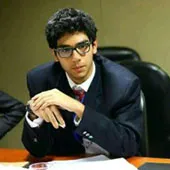It was a busy last month in the Indo-Pacific. In the of a few short days, global leaders convened for the annual Asean and East Asia Summits, chaired by Brunei. These summits, long the focus of major foreign policy action in Southeast Asia, took place against the backdrop of the still-raging Covid-19 pandemic, heightened rivalry between the United States and China as well as the Aukus nuclear submarine pact. The controversy surrounding the exclusion of Myanmar’s military junta also loomed large over the summit.
To begin with, the evolving global US-China rivalry spilled over into the summitry. President Joe Biden’s remarks made clear that Washington sees Southeast Asia as a key theatre of its Indo-Pacific competition with China. After four years of inactivity under President Donald Trump, Mr Biden promised that Asean nations could “expect to see me showing up and reaching out to you.” Further, Mr Biden moved to counter China’s sizeable influence in the region by announcing a $100-million initiative to boost America’s presence through investments in healthcare, climate change and economic recovery assistance. Mr Biden also singled out China’s actions in Taiwan for criticism and termed them “coercive” and a threat to regional stability. Not to be outdone, China’s Premier Li Keqiang announced a $3.1- million programme to purchase medical relief supplies for Asean nations. He also shot back at Mr Biden’s accusations of Chinese coercion in the South China Sea and urged the Americans to cease their support for pro-independence groups in Taiwan. China also announced that it would seek a special summit with Southeast Asian nations in November that would upgrade China-Asean ties to a comprehensive strategic partnership.
President Joe Biden’s remarks made clear that Washington sees Southeast Asia as a key theatre of its Indo-Pacific competition with China.
Australia also showed up to the party in a big way by announcing a $93-million economic package that would fund action on climate change, Covid-19 relief, transnational crime and terrorism. Australian Prime Minister Scott Morrison took the lead in reassuring jittery powers in the region that the recently concluded Aukus nuclear submarine pact was not a threat to stability. However, Asean remains split down the middle. While Indonesia and Malaysia have expressed concern at the prospect of an evolving arms race in the region, other players like Singapore, Vietnam and the Philippines have been more positive. Despite Mr Morrison’s assurances, the fact that joint statements from the summits contain no references to Aukus points to deep divisions in the region.
While Asean did urge China to resolve disputes peacefully in the South China Sea, the summit joint statements steered clear of criticising China on its human rights record and actions in Taiwan. Asean members, however, have proven adept at carving out space for themselves, and laid out a policy agenda that covered maritime cooperation, infrastructure development, climate change and counter-terrorism.
India’s positive role in the region was also highlighted during the India-Asean Summit. Among other things, India’s contribution to the region’s Covid-19 mitigation efforts, its resumption of vaccine exports and support for connectivity projects were singled out. On the latter, India extended a $1 billion line of credit for physical and digital connectivity projects to assist with Asean’s push to make Southeast Asia one of the world’s most connected and networked regions. India also expanded its role as a knowledge provider by extending PhD fellowships in IITs to Asean students. The summit also helped lay out some key areas for future cooperation. The region’s need for technical and vocational education, counter-terrorism partnership and funding for its sustainable development projects line up with Indian priorities and capabilities.
India extended a $1 billion line of credit for physical and digital connectivity projects to assist with Asean’s push to make Southeast Asia one of the world’s most connected and networked regions.
However, India will find that its influence and interests will be best served through cooperation with its partners in the Quad. Take Asean’s ambitions to build a sustainable blue water economy, for instance. While India brings considerable experience dealing with key Asean concerns like ecosystem management and tackling illegal fishing, the United States’ aforementioned $100 million package can magnify India’s impact by providing funding for workshops and technical training. Another key area of cooperation will be Asean’s digital connectivity goals. As the region invests in bringing its people online, tensions between a more open model of digital governance championed by the Quad will clash with China’s more authoritarian mode. By jointly aiding Asean through the newly formed Quad Critical Emerging Technologies grouping, India and its partners can help develop technical standards and digital infrastructure in Southeast Asia to their advantage. Asean’s desire to fund science and technology innovation, build sustainably financed infrastructure and mitigate the impact of climate change line up with the policy goals the Quad set for itself during its September summit. Successful cooperation in Southeast Asia could be the making of the Quad as it seeks to build its regional reputation.
The Quad’s influence in the region will remain limited without a credible economic alternative to China. While Mr Biden signalled that his administration was finally ready to discuss an “economic framework” for the region, the proof of the pudding will be in the eating. Given strident domestic opposition to trade pacts like the Trans-Pacific Partnership and the Regional Comprehensive Economic Partnership in the US and India, the Quad’s economic strategy looks distinctly lacking. Without an economic plan to complement its combined military and technological prowess, the Quad’s engagement with the Asean is likely to remain highly circumscribed.
This commentary originally appeared in Business Standard.
The views expressed above belong to the author(s). ORF research and analyses now available on Telegram! Click here to access our curated content — blogs, longforms and interviews.




 PREV
PREV



